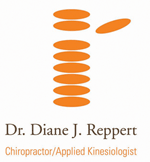As many of you know by now, fat has been given a bad rap. People worry about high blood fat levels, about being fat, having a fatty liver, or plaque in their arteries…
But what really causes all of the above? Is it fat?
NO – it’s SUGAR!
One might be asking then: so what about all those recommendations for a low-fat diet? Here’s a clue: a recent New York Times article revealed how 50 years ago three Harvard scientists were paid off by Big Sugar, including Coca-Cola, to say that sugar was fine, and fat was the culprit regarding cardiovascular disease!
What Really Happens…
When we eat, our bodies break down the macromolecules of protein, fats and carbohydrates into micronutrients, amino acids, fatty acids, and ultimately glucose. The pancreas then secretes the hormone insulin to carry the glucose to our cells. Inside the cells are insulin receptors. These receptors travel to the cell membrane to meet the insulin/glucose molecule and transport the glucose inside the cell for energy production.
OK- so that sounds like glucose is necessary for energy production, and it is, but not from table sugar (sucrose), or refined carbs like breads and pasta. Overconsumption of those kinds of sugar causes the pancreas to secrete too much insulin.
When there’s too much insulin binding with the glucose, the insulin receptors become resistant to responding. This is known as insulin resistance. Think of what it’s like when your inbox is constantly being flooded with emails asking for money; even though the causes are all great, you just start pressing the delete key without even reading the emails.
So what happens to the excess glucose attached to the insulin? It gets stored as FAT, or as PLAQUE in one’s arteries. Not only that—insulin resistance foreshadows diabetes.
This is because the pancreas, with so much sugar/carb intake, after overproducing insulin for a while begins to weary of producing it. Eventually it either stops, or does not produce an adequate amount to transport the glucose to the cells. THIS is diabetes. As a result, in order to utilize the natural glucose produced from the breakdown of even healthy food, one needs to take medications such as Metformin. This medication, and others like it, are not without sometimes serious side effects.
Another thing that happens when one eats sugar is that the liver takes the sugar and then creates fat (lipogenesis). In other words, excess sugar causes fatty liver, as well as excess body fat!
EATING FAT, on the other hand is essential for brain health, neurologic health, metabolism, mood, energy, hormone production, and the health of the cell membranes which regulate the transport of nutrients and other biochemicals into and out of the cell.
Of course, this all depends on the kind of fats we consume. Primarily, we want the health-supporting Omega 3 fats. Omega 3s improve insulin sensitivity and help to lower inflammation in the body. Omega 3s also mobilize fat from the fat cells to be burned by the mitochondria (the cell’s powerhouse), and this leads to weight loss.
Other good fats are medium chain triglycerides (MCTs) such as those found in coconuts and macadamias. These are rapidly burned in the mitochondria as well, and are considered super fuels. They also help one lose weight!
Processed fats, on the other hand, disturb our metabolism. Interestingly, and very importantly, the fat in beef changes depending on what the cattle are fed. Pasture raised, grass-fed cows produce the healthy Omega 3s. Those feeding on antibiotics, grains, and hormones do not. The fats from these animals are rendered fats. They produce free radicals, which are damaging to our cells. Another type of highly processed fat is TRANS fat. Trans fats poison the mitochondria, inhibit energy production, and cause weight gain.
Making it Simple…
Fats that are damaging and inflammatory:
- Sweet, salty fats – like French fries!

- Meats from hormone and antibiotic injected animals
- Trans fats: margarine, shortenings, deep fried foods, store bought cakes and cookies, crackers with long shelf-life (think saltines and Ritz), pancake and waffle mixes, and many more store-bought processed foods.
In fact the FDA is working to remove artificial trans fat from the food supply by 2018.
Healthy Fats:
- Cold water fish such as salmon, sardines, herring, mackerel, black cod, bluefish
- Avocados
- Olives
- Nuts, seeds (pumpkin, flax, chia)
- Olive oil, coconut oil, grass-fed butter, ghee, algae oil
- Dark chocolate (in small amounts ).
Now I’m getting hungry! 
The Bottom Line…
STOP or greatly minimize sugar consumption; that includes white bread and white flour products. These are absorbed too rapidly, causing spikes in blood sugar levels. As we now know, this leads to insulin resistance, puts stress on the pancreas, and can result in diabetes.
As an aside, if you’re thinking “well I’ll just use artificial sweeteners like Sweet n’ Low,” think again; those kinds of sugar substitutes are endocrine disruptors. These too have been shown to cause metabolic syndrome which leads to diabetes.
STOP eating trans fats. Here’s a good rule of thumb: “The longer the shelf life of a product, the shorter your shelf life.”
EAT HEALTHY FATS, as listed above.
And if you need a little more help with what (and what not) to eat, here are some healthy diets you can follow:
- Paleo
- GAPS
- FODMAPS
- Anti-inflammatory
Most of these are low (or no) starchy/refined carbs, and high in protein and good fats.
For more on this, see my earlier blog I LOVE FAT.


